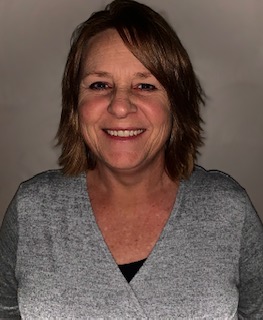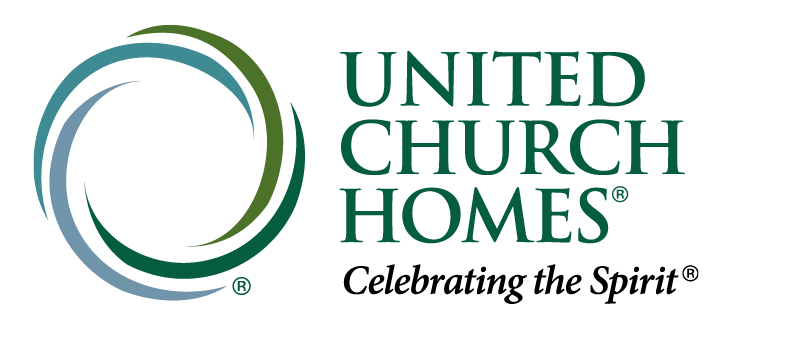
Highlights from this week’s conversation include:
Abundant Aging is a podcast series presented by United Church Homes. These shows offer ideas, information, and inspiration on how to improve our lives as we grow older. To learn more and to subscribe to the show, visit abundantagingpodcast.com.
Ashley Bills 00:08
Hello and welcome to Ask a NaviGuide part of the Abundant Aging Podcast Series. I’m Ashley, your host and on this show we talk about issues and aging and family caregiving that can be stressful to work through. And we do this with the tips and advice from the United Church Homes NaviGuide team. A NaviGuide is an experienced service coordinator who works with families and older adults to link them to services by providing customized guidance resources to help them navigate the complex healthcare system, gain access to community resources and find care and support services for each unique situation. Our NaviGuides have decades of experience helping families work through these issues, and we hope what is revealed in the show will help you also age abundantly. Today, we’re lucky to have our NaviGuide Jennifer with us who will help us understand food insecurity and overcoming the stigmas. But before we get started, the opinions shared on this podcast are those of our amazing NaviGuides and not meant to convey or take the place of clinical legal or other professional advice. Hello, Jennifer, so we will jump right in. So before we get started, if you could just explain a little bit about what you do, how you found yourself in this role and where you’re located.
Jennifer Adams 01:24
So I am a NaviGuide in northern Indiana, I work in affordable housing communities for low income seniors. So 62 and older is the demographic that I serve. I work in Marshall County, Indiana, in Elkhart County, Indiana. And why am I in this role? Well, I used to actually work in a long term care facility and social services, and the assisted living facility and this role, I really get to serve the individual and base my services based off of what their needs and desires are. So I really, I love doing what I do and enjoy serving the people that I do, and meeting their individual needs.
Ashley Bills 02:17
Awesome. And that’s what it takes a heart to serve others. So appreciate that, you are sharing that. So we talked on an earlier podcast about seeing the signs of food insecurity in our loved ones or those we serve. But once you suspect it, what do you do?
Jennifer Adams 02:33
First, I would start the conversation by trying to understand what might be causing the issue. We can’t assume that it’s always finances, I would talk to them about their mobility issues, kinda, you know, you want to kind of keep it in a conversation, you don’t want to just start slamming people with all of these, you know, questions. So I would just say, hey, you know, I’ve noticed you’re having more difficulty getting around lately, what’s going on. And let them kind of start discussing that in themselves. So making them feel comfortable, opening up to me. And then once we start talking about that issue, or what’s going on with what I’m really seeing, and then opening up about other things, they’ll usually start talking about other things. And then we can expand that conversation into how maybe their mobility issue is affecting their ability to go get food or their ability to prepare food. So I’m leading that conversation, which just opens up a whole plethora of other conversations concerning food insecurity, but I’m also maintaining their dignity while doing that.
Ashley Bills 03:59
Yeah, and I’m sure that’s tough to balance because like you said, you open one door, who knows where it could lead next. So with that, you know, we know that junk food is the cheapest, cheapest food you can get and not only convenient, but often the best tasting. So when you’re engaging someone, I bet you’re often talking about replacing bad food with good foods. So how do you recognize the habits here? Do people necessarily want a healthy diet? Or are they open to hearing something different? Or what’s your perspective?
Jennifer Adams 04:35
My perspective is that Yep, we love convenience. It’s so much easier to open up that bag of chips than to go and cook a meal. And it’s pretty easy to recognize these habits through just simple conversations with them. I find that when I’m just sitting and chatting with the individuals I work with that I gain a whole lot of information. Um, I believe that people want to eat better, they want to be healthy, they just don’t want to give up the convenience to do that. So I do have conversations often about healthy alternatives. And when we’re having these conversations, we need to be real. Okay? Most people are not going to choose an apple over a candy bar, it’s just not going to happen. So it’s important to discuss options that are comparable to the foods that maybe they need to change. So if somebody loves those salty, crunchy snacks, then you know, maybe we need to discuss the benefits of choosing nuts over potato chips, because they’ll still get that crunchy, salty snack, but there’ll be a lot more nutrients in that type of snack.
Ashley Bills 05:51
Yeah, that’s a good point. Because I mean, I’m as guilty as anyone. I actually, full disclosure, had peanut butter captain crunch for lunch this week, because it was right here at my desk. So I get it. And I understand that yeah, convenience, you hit a good point there with convenience. You know, people don’t want to make something and spend the time doing that, you know, the world is changing. And the faster we can get things in, the quicker and the easier. That’s what we’re going to be all about. So I can imagine those are difficult situations to manage, because I’m not sure I’d rather have an apple there. So in talking about the stigmas might there be, what stigmas might be around these sorts of programs that are available? I know, you touched on some of those one, another podcast, you can bring those up again, if you’d like. But what kind of stigmas are around them about you know, maybe eating healthy? And how do you dispel those?
Jennifer Adams 06:47
So a lot of the stigmas that surround these food programs are actually just associated with people wanting to maintain their dignity. Unfortunately, a lot of the programs we’ll see don’t allow for that. So many older adults don’t want to be perceived as needing assistance. They’ve been taught not to take charity, we need to focus on other issues rather than the actual food insecurity. There’s a couple great programs that focus on socialization, their food programs, but they focus, the focus is on socialization. These programs are over, you know, they’re great to overcome the feeling of accepting charity or needing help, you could introduce those programs like, you know, saying something like, I remember you telling me you hate cooking for one person or that, you know, it really stinks to have to eat alone every day. I know this group that gets together every day for lunch, and they have some great conversations, they get an amazing meal. And I bet that they’d love to have you join them. When you present a program and in that way, then we’re empathizing with their loneliness or not wanting to eat alone. And we’re also allowing them to maintain dignity. And it’s not looking like they’re accepting charity. Because, you know, imagine being taught that your whole life that we don’t accept charity, or, you know, having some mobility issues that make it difficult for you to stand, or walk and then having to go stand in line at a pantry or somewhere to get sued, that’s probably not going to happen. These individuals, they just can’t do that. And they would rather have minimal food than to accept that charity in a public manner. And then when we’re speaking with these individuals, we need to meet them where they’re at by finding programs that come to them. There’s a lot of hot meal programs and even some pantries that provide delivery, especially to older adults. And then there’s also a lot of misinformation about the type of food that someone will receive. That’s a pretty big stigma when people discuss food programs. They believe that pantries only offer poor quality food, or you know that they’re just they’re gonna get the same things over and over. That’s not true. Much of the food that comes into your local food pantries actually comes from your local farms. Farmers donate fruits and vegetables butchers donate knees. I see this often so the food is often high quality. Yeah, you’re gonna get some shelf stable foods, you know your canned goods and things like that. Those are great things to just add to your weekly meal planning, you know, so you get some noodles, okay. Get some noodles or a key and have chicken. So you know, now you can use that chicken and those noodles. And maybe you just need some cream of chicken soup and you have chicken and noodles right there, you know. So the shelf stable items are great to just kind of add into your weekly meal planning and add a couple of different items, it helps cut down that cost of your food budget. And it’s a great way to maintain, you know, nutrition in your diet. I just want to speak about the hot meals and lunches these programs are, they’re required to follow very specific dietary guidelines. So some people believe they’re, you know, not going to get a healthy meal from them. But that is absolutely not true. The guidelines are set by, you know, government agencies, and they can also some of the programs will create specific meals to fit a you know, if an individual has a specific dietary need. So they’re diabetic, and so they have to follow a diabetic diet, some of these programs will even meet that need. But I think the most important thing about all the stigmas and the barriers is that, you know, we just don’t, we’re not good about getting the word out about these programs in the real world. There’s not enough awareness about the food programs, and the services that are available to older adults out there. We need to do a better job about making people aware of services to them. And we also need to do a better job about making it easier for older adults to utilize these programs.
Ashley Bills 11:45
Yeah, there’s really a lot out there that we’re learning through the series of podcasts that, you know, the biggest barrier is that people just don’t know about them or know how to get in touch with those. And I think that’s where the navigator program comes in and you know, to link people to the services. So, Jennifer, I appreciate your wealth of knowledge, so much and your time and expertise today. And we thank you for listening to another episode of Ask a NaviGuide, part of the abundant aging podcast series brought to you by United Church Homes. If you like the show, please share and subscribe so we can bring you more content. If you have an episode suggestion you can leave feedback at abundant aging podcast.com. For more information about the NABBA Guide program, please visit UCHNaviGuide.org And for more information about United Church homes, visit UnitedChurchHomes.org We’ll see you next time!
